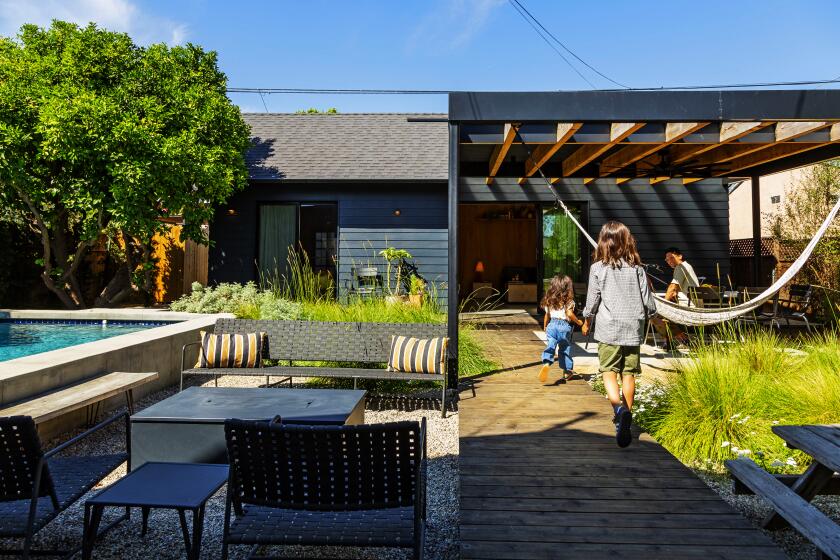Santa Monica’s historic Sears store has been remade as office space, but who’s renting?
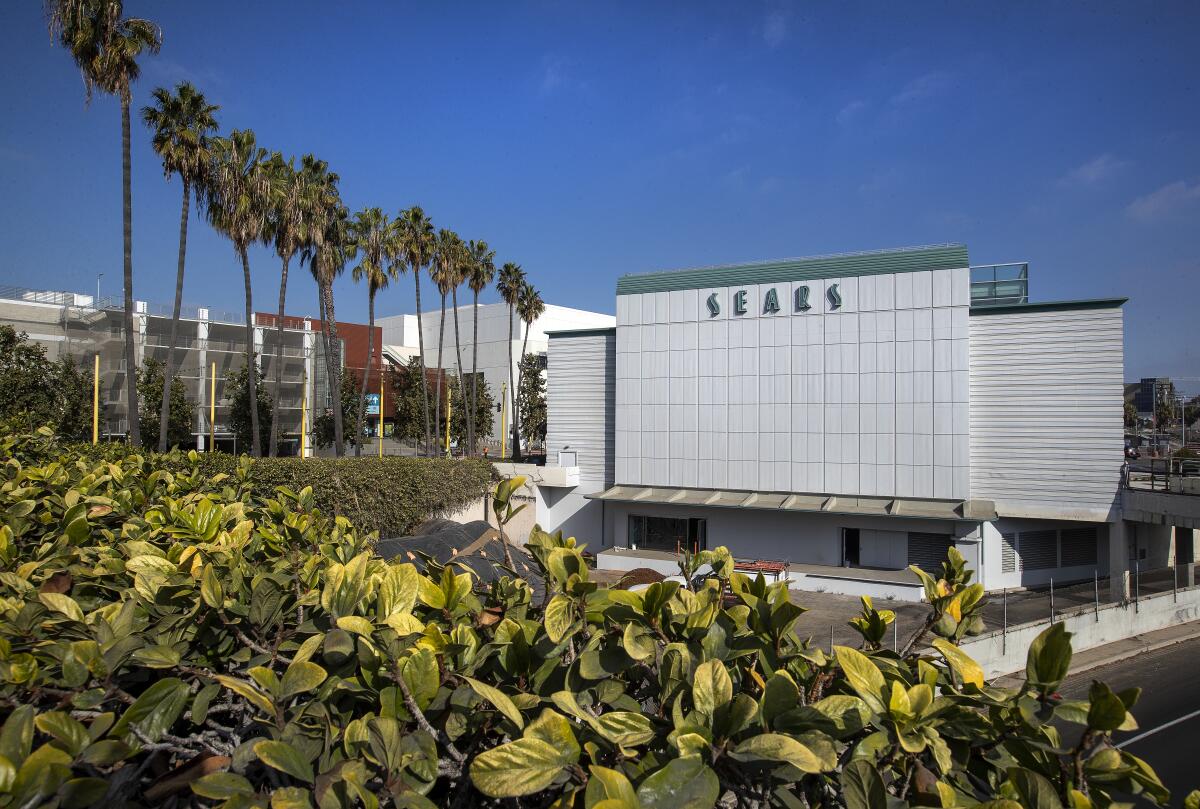
- Share via
A local landmark since shortly after World War II, the Santa Monica Sears store has spent more than two years getting a $50-million makeover to turn it into a chic office building for creative types, spiced with a choice handful of restaurants and stores appealing to locals and the millions of annual visitors who typically visit the seaside city.
The ambitious project is intended be a showcase for how to reuse obsolete department stores in urban areas. Its owners predict it will turn out that way, but their timing has run into a global catastrophe.
Now that the complex, renamed Mark 302, is ready for tenants to build out their own spaces, the pandemic has knocked the office and restaurant rental markets on their heels.
Work started on the former Sears in a different world — Santa Monica office space was hard to find, and the restaurant scene thrived. Now, few new office leases are being signed anywhere in the region, and closed restaurants are heartbreakingly commonplace as COVID-19 fears and operating restrictions drive diners back home.
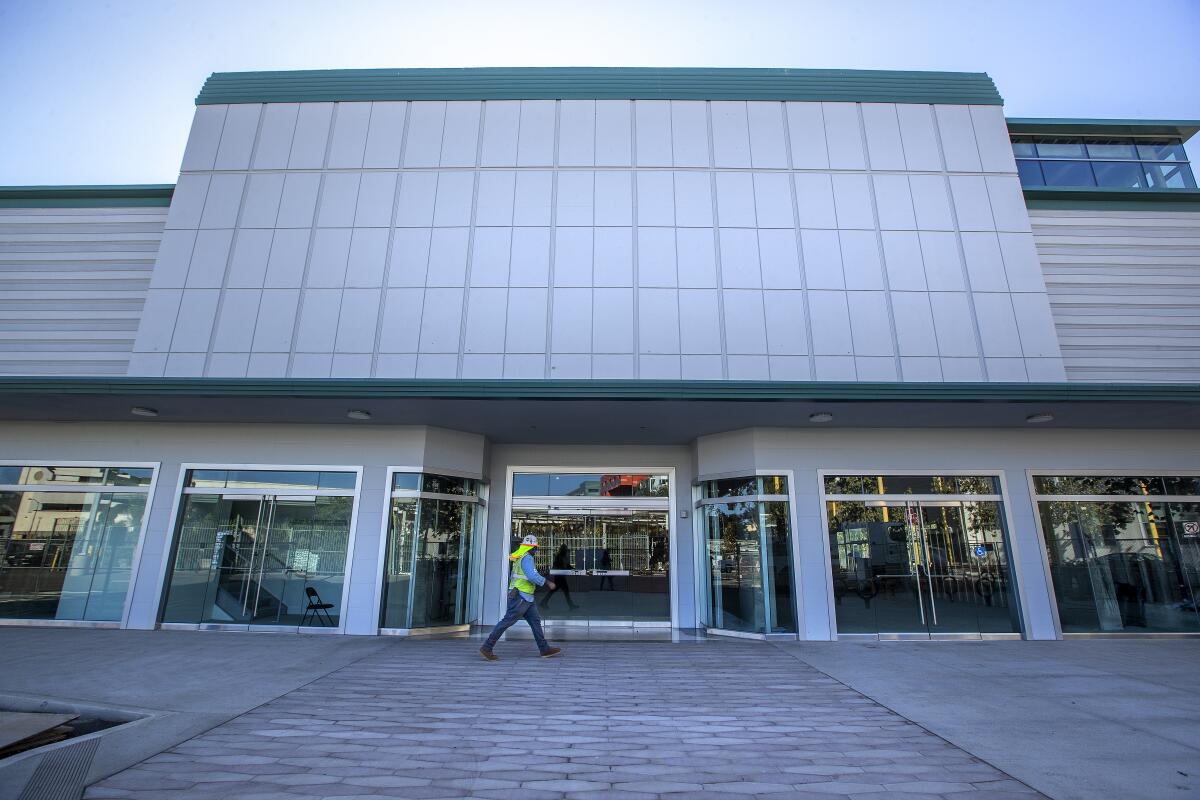
“It’s been a challenging market,” said Ken Lombard, chief operating officer of Seritage Growth Properties, which owns the former department store with partner Invesco Real Estate.
Despite the current headwinds, the developers proclaim optimism about the prospects of Mark 302. It has a lot going for it, they say, starting with a Santa Monica address.
“It’s unique, and it’s got a great location in what folks consider to be the tech corridor of L.A.,” Lombard said, and it should hold appeal for businesses in the economically resilient fields of technology and entertainment. “The coolness of the building and the type of design lends itself to that type of tenant.”
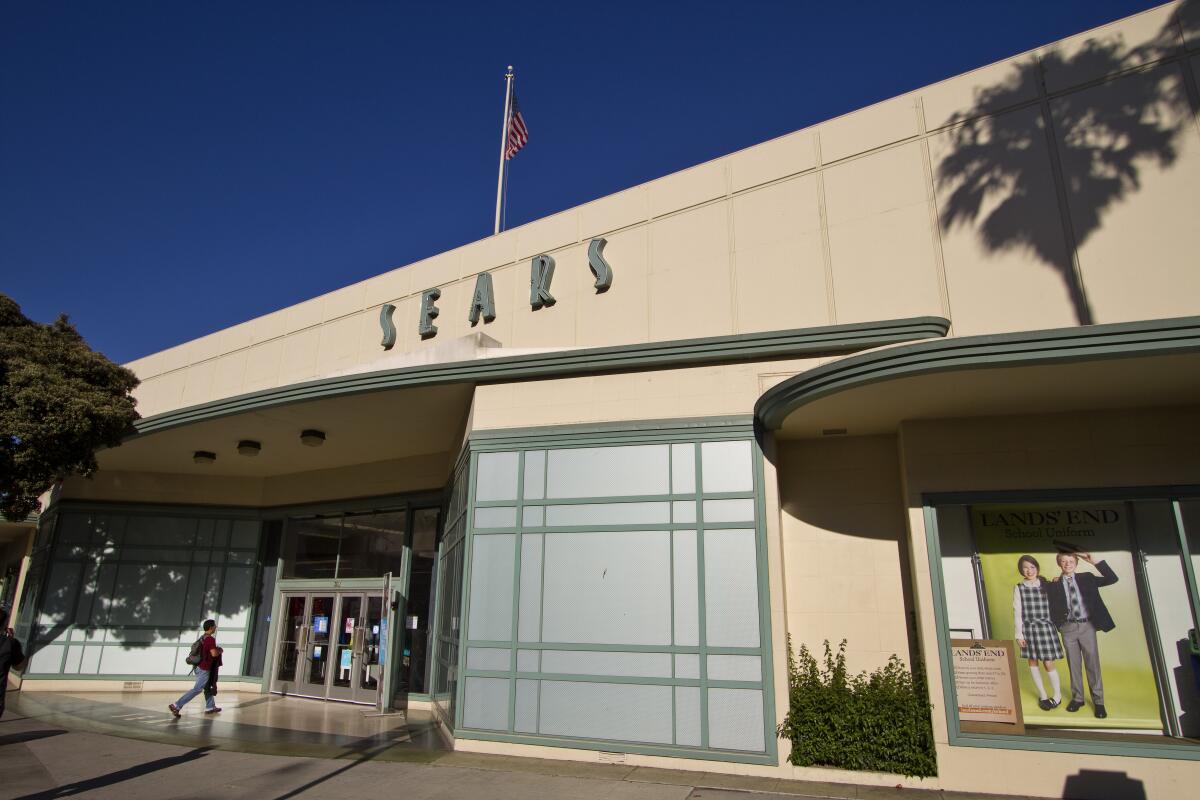
The store was designed by architect Rowland Crawford in a late Art Deco style called Streamline Moderne, known for curving forms and long horizontal lines. Crawford designed several Los Angeles-area buildings, including the Brentwood Country Mart and the Times-Mirror building in downtown L.A.
His name lent cachet to the store, which opened to fanfare in 1947, said Carol Lemlein of the Santa Monica Conservancy.
“The architect was relatively well known at the time, and it was just a very big deal to have a store of that sort in Santa Monica,” Lemlein said after the makeover was announced.
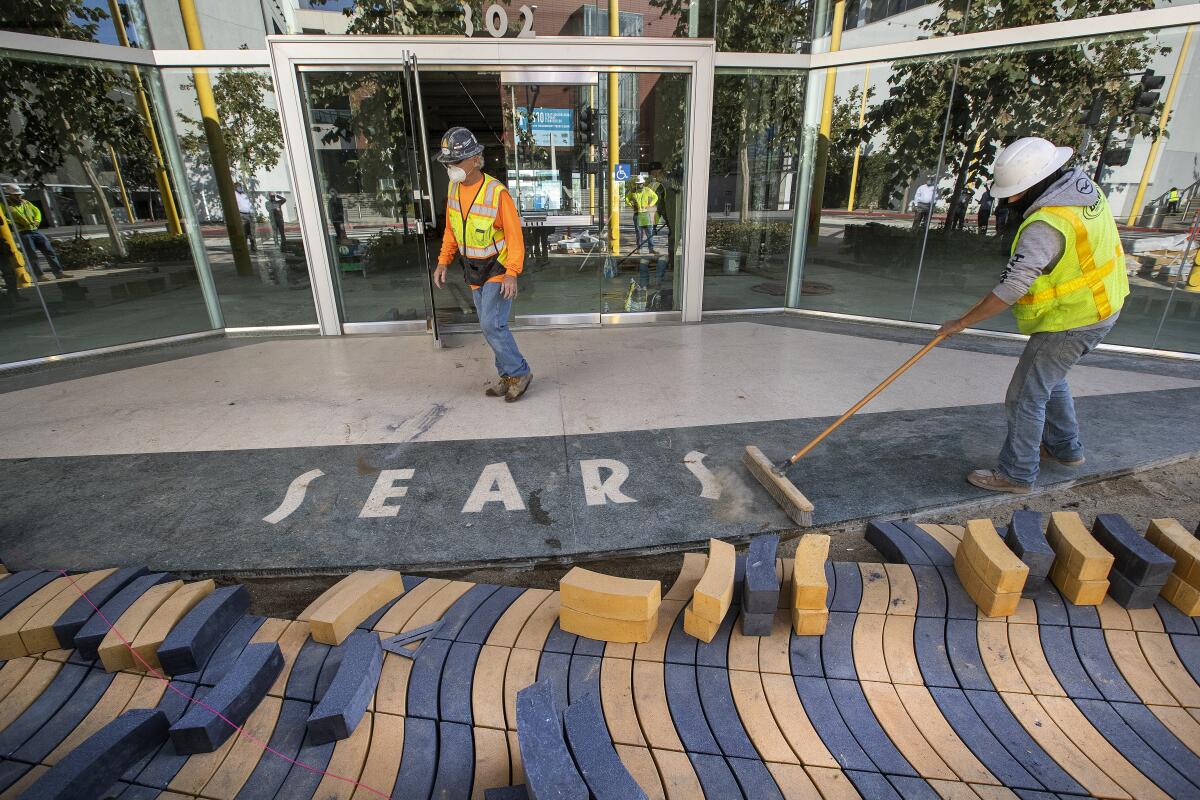
The Santa Monica Sears was one of many department stores built in the years immediately after World War II to capitalize on the booming growth of Southern California and the pent-up consumer demand unleashed once the war ended. It was the 10th Sears store in Los Angeles County.
The last two decades have been hard on department stores, however, with shifts in consumers’ tastes for hard goods and shoppers’ ever-growing attraction to buying online.
Giants such as Sears, Macy’s and J.C. Penney Co., which once dominated the retail landscape, have closed hundreds of stores in recent years and the pandemic has hastened the pace of change, analysts say. The Santa Monica Sears closed in April 2017.

“We’re seeing 10 years of retail evolution in 10 months,” Bay Area real estate consultant David Greensfelder said, as shoppers retreat from the shared experience of browsing indoor malls and department stores.
Mark 302 may also have a difficult time time attracting stores, said Greensfelder, who is not involved in the project. The building at 302 Colorado Ave. is separated from the Third Street Promenade pedestrian mall and downtown Santa Monica by the hulking Santa Monica Place shopping center.
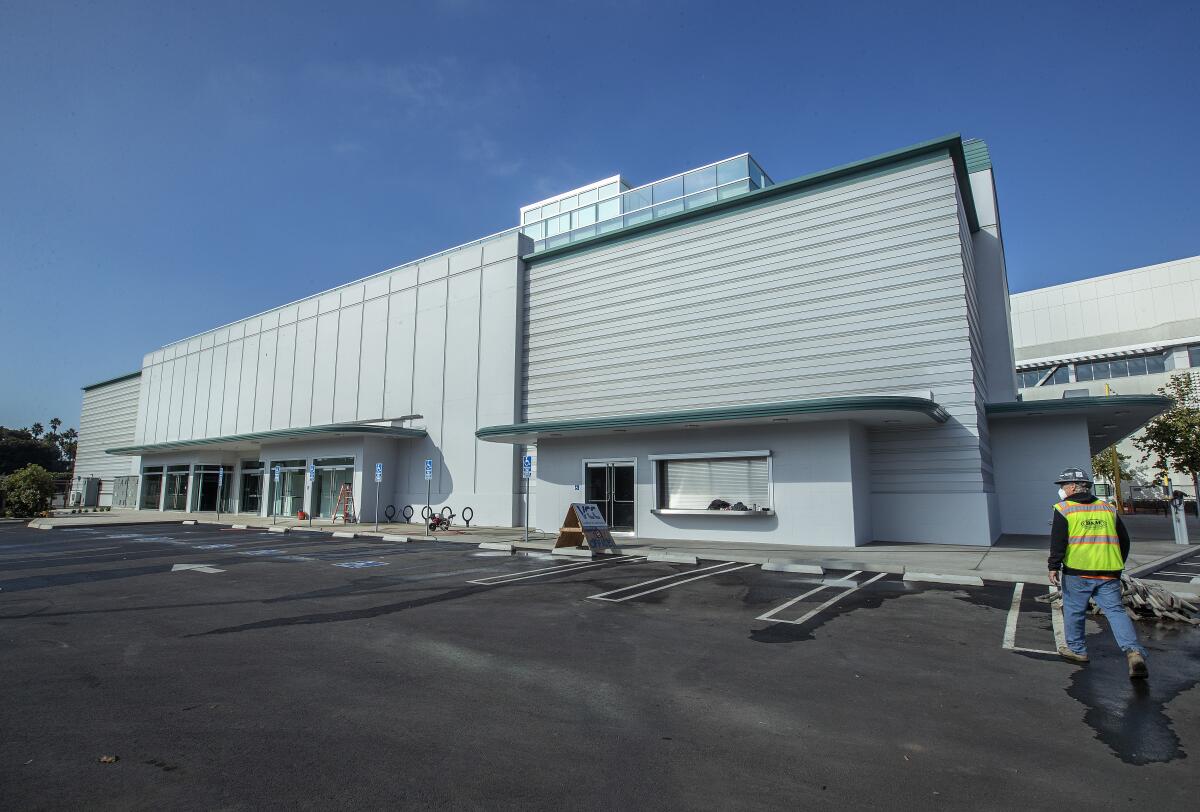
“There are plenty of other places for retailers to go” in Santa Monica, Greensfelder said, including empty stores ringing the tourist-friendly Promenade.
But the timing for leasing Mark 302’s office space may not be as bad the pandemic-stalled market would suggest.
“They are bringing it to market just as we’re going to have an idea of when we are able to get back,” Greensfelder said.
Indeed, there has been an uptick in the number of companies touring the building in recent weeks, said Mary Rottler, who is in charge of leasing for Seritage.
Efforts to have a COVID-19 vaccine ready to distribute soon are stirring the planning instincts of business operators.

“As vaccines get closer to becoming available, I think people are really beginning to think seriously about their office options,” Lombard said. “We are back to being encouraged that we will be able to find the right tenant for the building,” which has 50,000 square feet of offices to rent.
The pandemic-related slowdown in the office market prompted Seritage to focus on health safety measures in the updated building, such as touchless elevators and a virus-trapping air filtration system, he said. Tenants will have outdoor workspaces and exclusive use of a landscaped roof deck, which has views of the Pacific Ocean, Santa Monica Mountains and downtown Los Angeles.
The developers converted the building from three stories to four by improving an upstairs mezzanine once used for storing Sears merchandise. The former basement, once served by a loading dock, also will be leased to tenants.
Ground-level windows dating to the 1940s that had been boarded up in recent decades were reopened to help light as many as six restaurants or stores. On the north side of the building will be a 25-foot-tall mural visible from the nearby Metro light rail station.
Seritage hopes to eventually add apartments to what is now the building’s parking lot, but the company has yet to seek city approval for housing.
The New York real estate investment firm acquired 266 Sears and Kmart stores across the country that could potentially be redeveloped. It gained control of the stores in 2015 as part of a $2.7-billion deal that involved leasing most of them back to Sears Holding Corp., which also owns Kmart.
Seritage sold a 50% interest in Mark 302 to Atlanta investment manager Invesco in 2018 in a deal that valued the property at $145 million.
The two companies are also redeveloping a former Sears in San Diego into a similar complex with offices, stores and restaurants called the Collection at UTC. Offices there have been rented to co-working space provider Industrious. It is expected to open next summer.
Finding tenants for Mark 302 in Santa Monica will be harder than it would have been before the pandemic put a damper on the market, said Santa Monica real estate broker Rafael Padilla of Par Commercial Brokerage.
“What they have done is a beautiful and creative project” that could appeal to tech or entertainment companies, he said. “The problem is more competition than they had before.”
The restaurant business is experiencing hard times, Padilla said, but chefs and entrepreneurial operators will find ways to regroup after the pandemic and come up with new concepts at the local level that Seritage might not have anticipated.
“Maybe they wanted Wolfgang Puck,” he said, “and now they’re going to get Wolfgang Chuck.”
More to Read
Inside the business of entertainment
The Wide Shot brings you news, analysis and insights on everything from streaming wars to production — and what it all means for the future.
You may occasionally receive promotional content from the Los Angeles Times.




